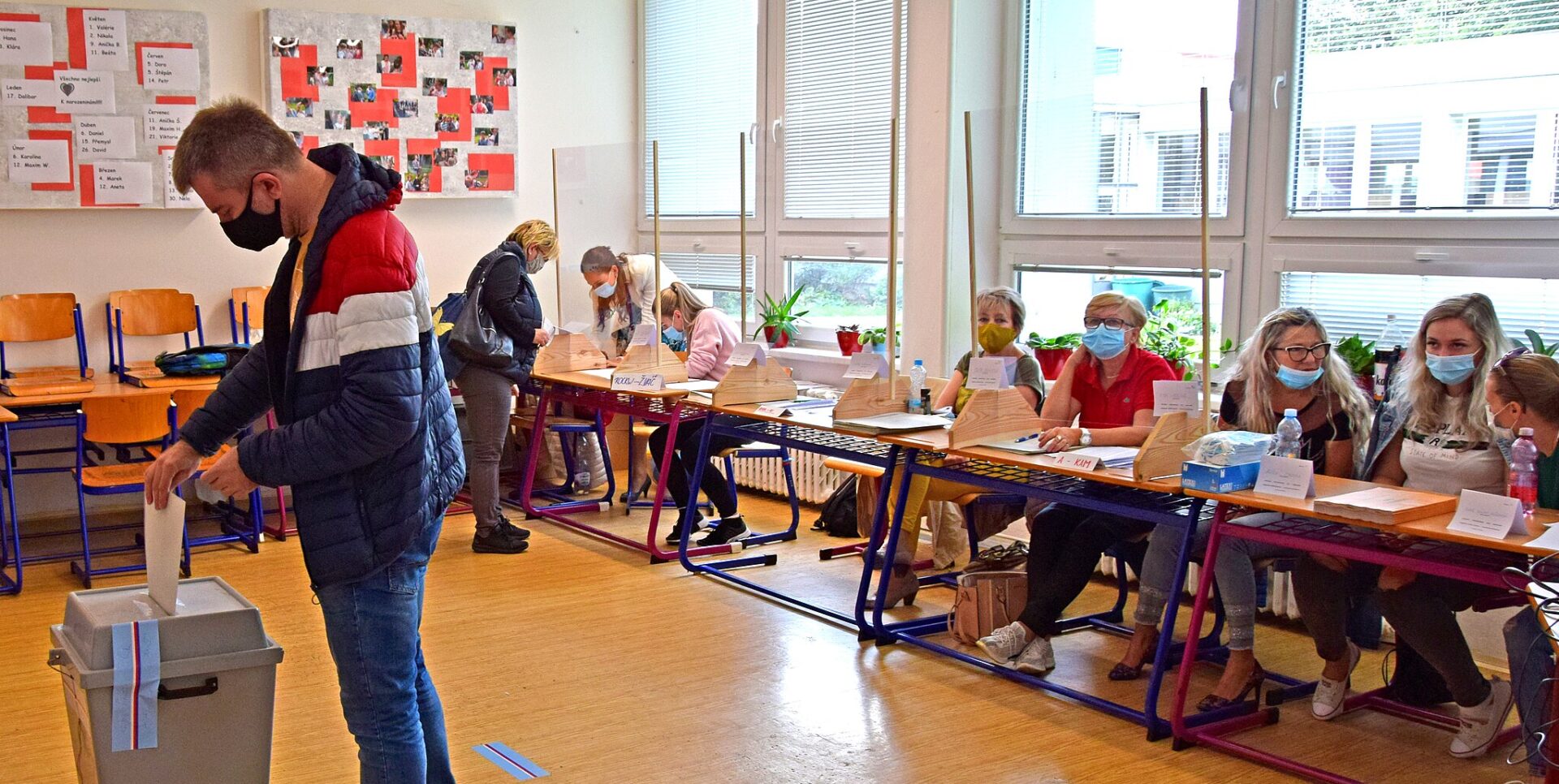How did the COVID-19 pandemic affect voter turnout? Or, more particularly: How did it affect perceptions of voter turnout? The latter is the question with which Petr Voda and Petra Vodová concerned themselves in “The Effects of COVID-19 Pandemic Perceptions on Voter Turnout in the Czech Republic,” published in the December 2023 issue of Communist and Post-Communist Studies.
The authors considered the Czech 2020 regional election in particular. Czech regional elections are held every four years across 13 regions with the list proportional voting system (assemblies, the authors inform us, enjoy “substantial regional autonomy,” but parliamentary parties campaigned around national-level issues). It was held over two days and was the first Czech election during the pandemic period. It is also worth noting that, at the time of the election, though there was a way for those quarantining to vote, infections were actually low compared with elsewhere in the European Union; it was only after the elections that they surged to the highest cases per million of any country in the world.
They found that there was no effect of interaction between age and perceived danger, and that the effect of perceived danger only worked for a certain kind of Czech voter — namely, for women, but not for men.
The authors hypothesized that “perceived danger of the pandemic deters people from attending an election, and that such a constraint would be higher for those who know many infected people than for those who do not, for elderly people more than for younger people, and for women more than for men.” They found that, in fact, there was no effect of interaction between age and perceived danger, and that the effect of perceived danger only worked for a certain kind of Czech voter — namely, for women, but not for men. Further, when people did not know anyone who was infected, there was no effect of perceived danger. However, when they knew many people who were infected, there was indeed a “strong negative impact.” This was determined through a “quasibinomial logistic regression with data on 866 respondents from a post-electoral survey.”
The authors concede that the “Czech case is a least likely case to observe effects of the pandemic,” since the election took place at the beginning of the second wave and voter turnout was actually higher than in 2016. However, they believe the analysis makes several valuable contributions to the literature: “empirical evidence from a less-investigated region”; a contribution to comprehension of the dynamics of elections in a post-communist country with comparatively little partisanship; and an extension of the logic of rational choice theory as an explanation for election turnout. “The theory is usually used to assess the costs of attending elections and the benefits of voting,” the authors explain.
Since they’ve added perception of danger as assessed by voters, and as their study is related to circumstances between waves of the pandemic, “the perception of danger from COVID-19 may be an important factor more generally, not only in the case of a real danger.”
The authors also suggest that future researchers ask “how the relationship between the perception of a pandemic and voting (or political behavior, generally) evolved after the real and strong impact of the disease.”





















